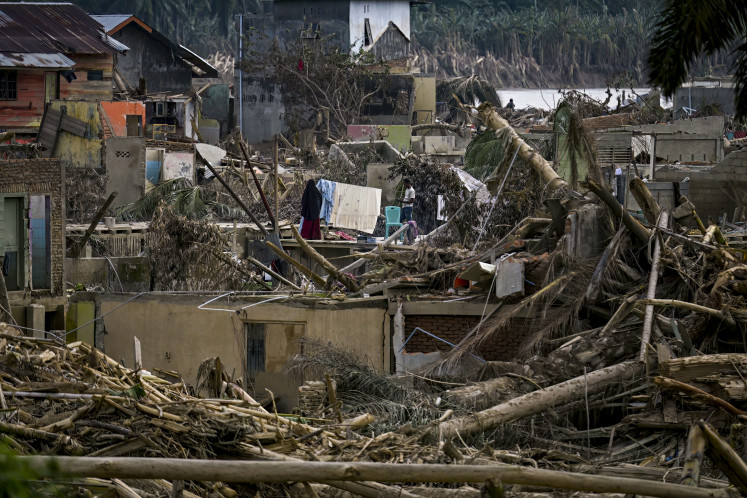Popular Reads
Top Results
Can't find what you're looking for?
View all search resultsPopular Reads
Top Results
Can't find what you're looking for?
View all search resultsDinoyo, a ceramic village in Malang
Industry: Over the last 10 years, producers have been employing workers from surrounding areas, including housewives and teenagers
Change text size
Gift Premium Articles
to Anyone
I
span class="caption">Industry: Over the last 10 years, producers have been employing workers from surrounding areas, including housewives and teenagers. (Aman Rochman)
About 5 kilometers east of Malang, East Java, workers prepare the materials needed to make ceramics, dry pottery along the road, or clean their home workshops.
It's a glimpse of morning activity in the Dinoyo ceramic village, where 60 percent of residents work as ceramic makers and sellers.
Originally, the village was a rice paddy. However, abundant materials available from the nearby regencies of Tuluanggung, Blitar and Trenggalek prompted local residents in 1968 to learn ceramic craftsmanship and change professions.
Today, the village has 38 ceramic producers and traders, each producing about 3,000 pieces a month.
The ceramics are made from kaolin, stones, quartz, sand and clay; which are then sieved and mixed with water before they are shaped by gypsum molds.
Molds are then smoothed with wet sponges to refine shapes and dried again, followed by coloring and motif drawings to enhance the artistic look of the pieces.
For a piece 70 centimeters tall, the process takes five days. Over the last four years, the market has started to make smaller, more elaborately designed items.
Colors and motifs then glazed. 'Malang-styled ceramics feature glossy porcelain white a dominant shade of blue and apple tree decorations, while those made on order are suited to consumers' requests,' said Syamsul, 55, chairman of the local ceramic crafters' association.
Products are heated in a furnace at 1,200 degrees Celsius for 10 hours and cooled for 24 hours.
Initially, local home industries were limited to families and relatives. However, over the last ten years the producers have been employing workers from surrounding areas, including housewives and teenagers. Working six days a week from 8 a.m. to 2 p.m., they can earn up to Rp 950,000 (US$78.45) per month.
'I've worked for four years here to help my parents and save some money for my college studies,' said Sriwahyuni, 20.
Dinoyo ceramics cost from Rp 5,000 to Rp 250,000 and are sold as far away as Jakarta, Malaysia and South Korea. Customers in Dinoyo can observe firsthand the crafting process, making the place a tourist attraction.
Five years ago, local producers were hit by twin blows: the monetary crisis and an invasion of less expensive quality ceramics from China. Ceramic souvenir shops in Malang closed, although some local residents have started work again, reducing the production of large sized items and relying on customer orders.
While the threat of Chinese ceramics remains, people in Dinoyo say that they hope that the government will help them promote their local ceramics to the global market into which they have been thrust.










